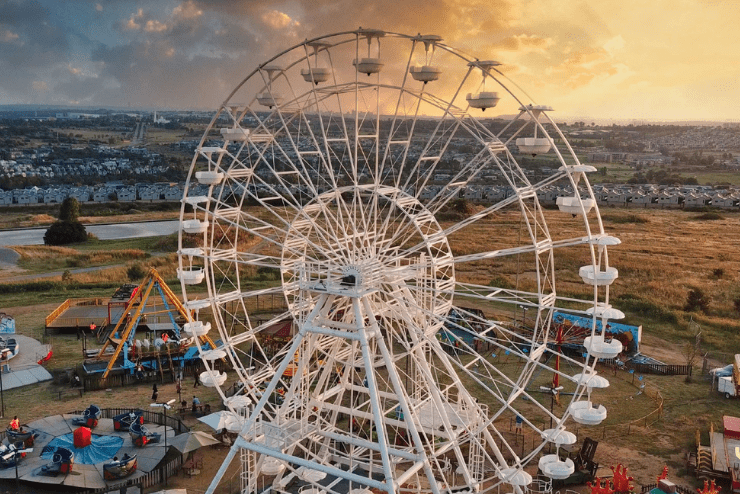Johannesburg North Attractions - The Facts
Johannesburg North Attractions - The Facts
Blog Article
The Buzz on Johannesburg North Attractions
Table of ContentsSome Ideas on Johannesburg North Attractions You Should KnowJohannesburg North Attractions for BeginnersJohannesburg North Attractions Things To Know Before You Get ThisThe 10-Second Trick For Johannesburg North AttractionsNot known Incorrect Statements About Johannesburg North Attractions Top Guidelines Of Johannesburg North AttractionsJohannesburg North Attractions Fundamentals Explained
Nonetheless you ought to maintain safety and security in mind and travelers have to stay sharp in all times when in unfamiliar environments. Speak with the locals when you remain in community to learn about the location you are staying in. Johannesburg North attractions. When on the street (this doesn't put on mall and various other protected atmospheres) best basic guidance is to attempt your best to appear like a regional and to stay clear of displaying any form of riches
The Main Principles Of Johannesburg North Attractions
Professor Revil Mason O. J. (Thomson, 1946) explored the Witwatersrand's pre-colonial background. His archaeological job exploded the 'em pty land' myth, according to which the area was lacking human habitation before the arrival of European settlers. In his publications Prehistory of the Transvaal: A Record of Human Activity (1962) and Origins of Black People of Johannesburg and the Southern Western Central Transvaal Advertisement 3501880 (1986 ), Teacher Mason showed the level of social and financial development in the location prior to Europeans set foot right here.

The Ultimate Guide To Johannesburg North Attractions
In 1878, David Wardrop found gold in quartz capillaries at Zwartkop, north of Krugersdorp. In 1881, Stephanus Minnaar came throughout gold on the farm Kromdraai, near the Cradle of Mankind.
In March 1886, a protrusion (soon to be called the Main Coral reef) was discovered, quite fortunately, on Gerhardus Oosthuizen's farm Langlaagte. Some claim that the Lancastrian coal miner George Walker discovered this reef. Another itinerant English prospector, George Harrison (who had actually previously operated in Australian mines) gotten a prospecting permit in regard of Langlaagte in May 1886.
He decided to go on in a pursuit for greener fields, and disposed of his Langlaagte claim for the princely sum of 10. Alas: below lay the wealthiest goldfield ever before located. The exploration of this rich auriferous reef prompted a gold thrill that signalled the end of agrarian tranquillity in the southerly Transvaal.
It would certainly, within 6 years, come to be the largest community in southern Africa. Within a years, it would make the Z. A. R. up until after that an anarchical and insolvent little state the most affluent country in Africa. By the millenium, the Z. A. R. was to surpass Russia, Australia and the United States of America to become the globe's leading gold producer, producing greater than a quarter of the globe's gold.
All About Johannesburg North Attractions
It was called Ferreira's Camp, called after Colonel Ignatius Ferreira. He was a Boer adventurer upon whom the British authorities had actually bestowed the standing of Companion of the Most Identified Order of St Michael and St George (entitling him to the post-nominal letters C. M. G.) in appreciation for his duty in the war that had deposed the Pedi king Sekhukhune in 1879.
Two other camps were developed: Meyer's Camp on the ranch Doornfontein, and Paarl Camp. The latter was nicknamed Afrikander Camp; numerous people from the Cape Colony cleared up there.

The Ultimate Guide To Johannesburg North Attractions
This name acquired currency by word of mouth, such that the State Assistant attested the name to the Mining Commissioner on 9 October 1886. Stands in the village were auctioned on 8 December 1886. While some stands were marketed for 10, others were torn down for just sixpence.
2 years later, these erven were to transform hands for as much as 750 each. The tented camps decreased as a dorp of corrugated iron buildings developed and broadened north of the mines located along the Key Reef Roadway. Areas such as Jeppe's Community (where working-class immigrants erected their dwellings) and Doornfontein (where the wealthy new 'Randlords' started to create their extravagant residences) were quickly included in the ever-expanding map of the town.
All about Johannesburg North Attractions
Apart from the road names, there were no indicators of Johannesburg being situated in a Dutch-speaking country., virtually everyone spoke English and even the Federal government servants addressed one in English, unless they were first dealt with in the Taal (or Reduced Dutch)'.
Because of this, Britain had a passion in ensuring optimum conditions for gold production on the Witwatersrand, and that the gold was exported to London instead of Berlin a critical provided company website all the more clamant by the Z. A. R - Johannesburg North attractions.'s increasing toenadering with Germany. Mine owners were on a clash with Head of state Kruger, whose plan of monopolistic giving ins (commonly approved to his cronies) avoided mining business from obtaining supplies of materials (especially dynamite) and work by themselves, less expensive terms
Not known Facts About Johannesburg North Attractions
In 1890, the Volksraad had limited the franchise to white guys who had stayed in the Z. A. R. for fourteen years or longer, therefore disqualifying a lot of the immigrants (that took place to be the major factors to the fiscus). Nonetheless, anxiety for the ballot was a simple pretense for promoting a various program; most uitlanders regarded themselves as temporary site visitors and had no purpose of remaining in the Z.
Report this page